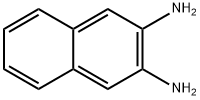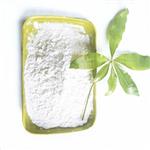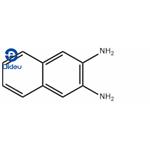2,3-Diaminonaphthalene is a highly selective colorimetric and fluorometric reagent for selenium detection and also used for the fluorometric determination of nitrite. It is also useful for detection of ketones and alpha-keto acids.
2,3-Diaminonaphthalene reacts with nitrosonium, which is formed from nitrite at low pH, to form the fluorescent dye 1 H-naphthotriazole. This method can be used to detect 10 nM to 10 uM of nitrite (NO2-) and is compatible with 96-well format.
Fluorometric probe for nitrite
Quantify 10 nM to 10 uM of nitrite
Yellow orange solid soluble in DMSO
colourless to white crystalline powder
In a reaction similar to that of DAF-FM , 2,3- diaminonaphthalene (D-7918) reacts with the nitrosonium cation that forms spontaneously from NO to form the fluorescent product 1H-naphthotriazole.Using 2,3-diaminonaphthalene, researchers have developed a rapid, quantitative fluorometric assay that can detect from 10 nM to 10 μM nitrite and is compatible with a 96-well microplate format.
2,3-Diaminonaphtaline (DAN) is used as a derivatisation-reagent for the determination of selenium at low detection limits.
2,3-Diaminonaphthalene is used in preparation of precursors for multi-layer 3D material comprising chiral organic sandwich compounds.
2,3-diaminonaphthalene (DAN) is a fluorometric probe for nitrite. It reacts with nitrosonium, which is formed from nitrite at low pH, to form the fluorescent dye 1 H-naphthotriazole. This method can be used to detect 10 nM to 10 uM of nitrite (NO2-) and is compatible with 96-well format.

Reaction of 2,3-Diaminonaphthalene with NO2.
Crystallise the diamine from water, or dissolve it in 0.1M HCl, by heating to 50o. After cooling, the solution is extracted with decalin to remove fluorescent impurities and centrifuged. [Beilstein 13 IV 346.]




